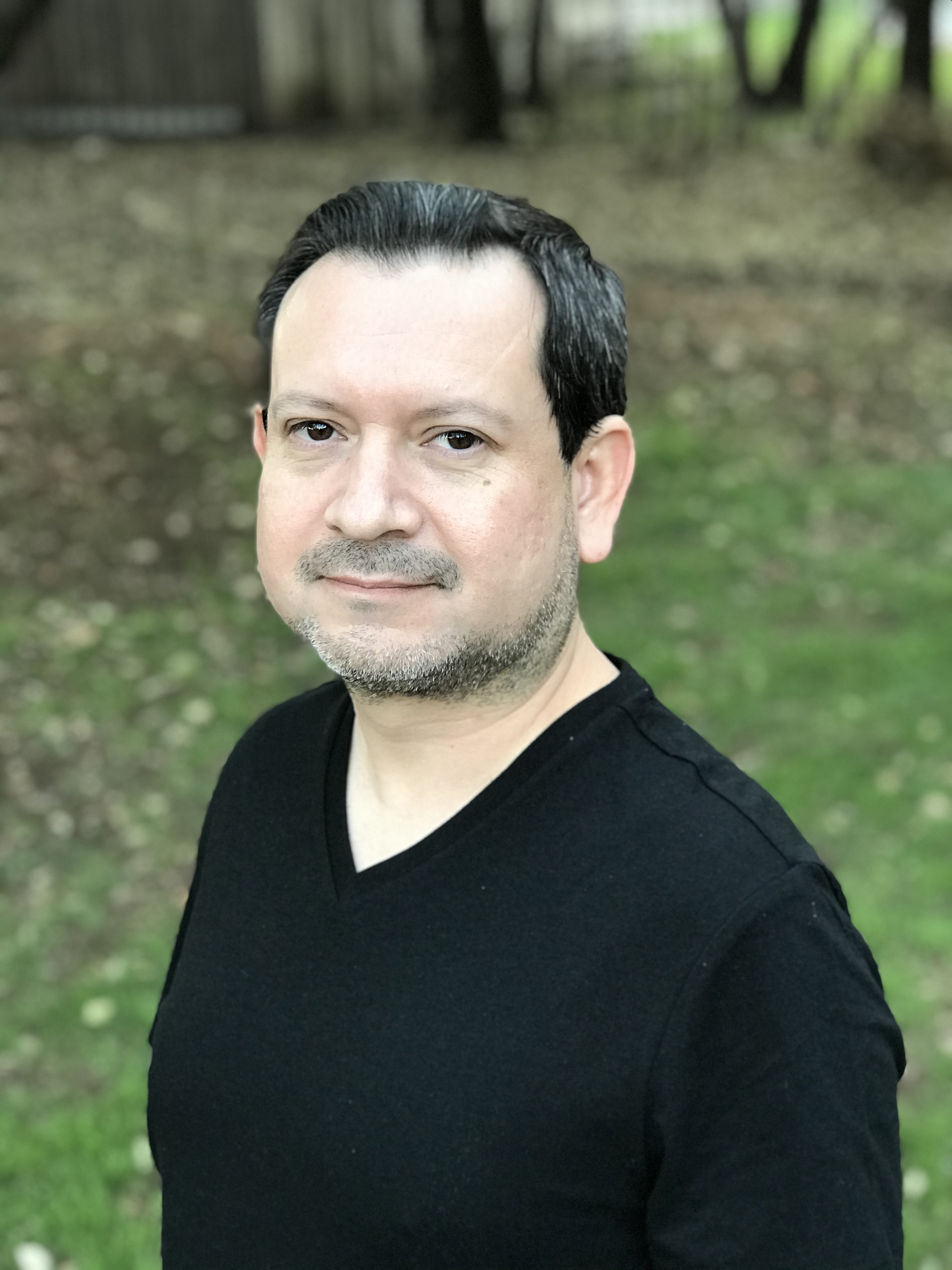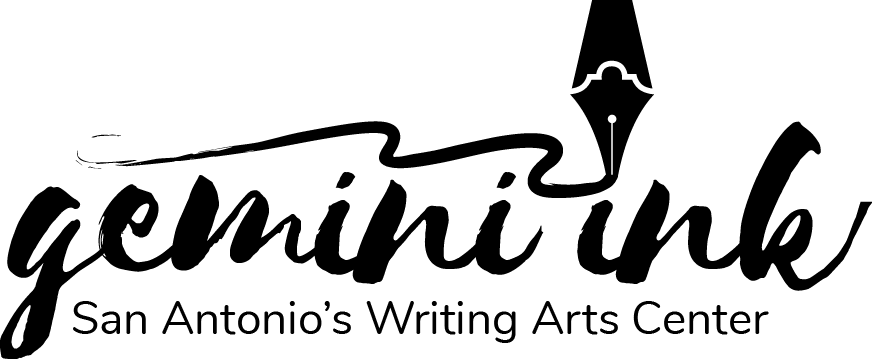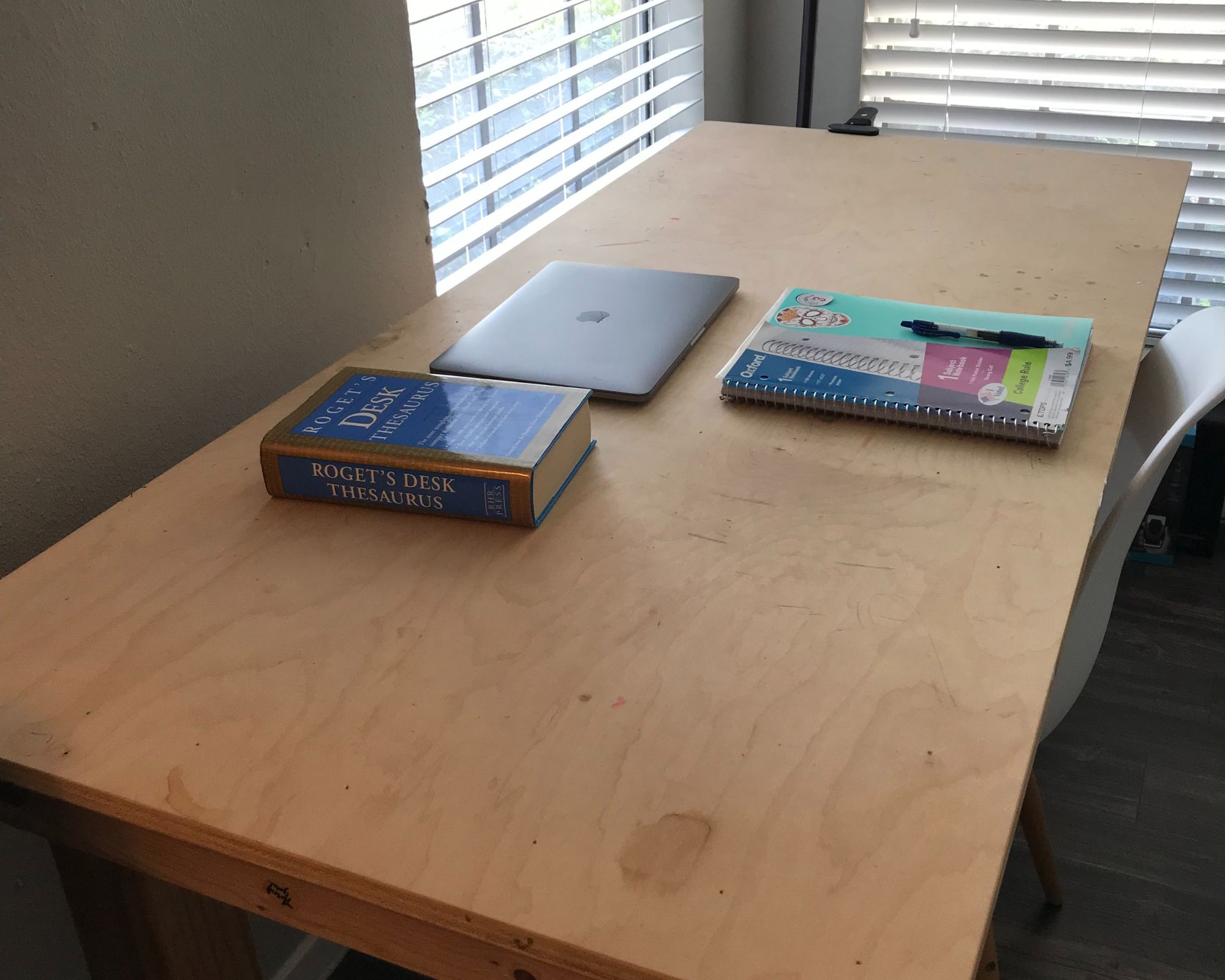The Writer’s Desk features the desks and writing practices of Gemini Ink faculty, visiting authors, teaching artists, volunteers, students, interns, staff, partners and more. Receive new posts in your inbox by subscribing to our newsletter at bit.ly/geminiinknewsletter.
Join John Olivares Espinoza on Saturdays, February 4 & 11, 10am-12pm, CST, hybrid (via Zoom and in-person), for his workshop: Undressing the Secrets to Writing About the Erotic in Poetry. This class will focus on how to write poetry about love, eroticism, and sex without crossing into cheesy, hackneyed, and pornographic red zones. It’s designed for writers of all skill levels. Prose writers are welcome!
Sandra Cisneros said, “Write for your lover, but edit for your enemy.” Nothing captures the idea of writing your first draft uninhibitedly, getting all that emotion down on paper, followed by editing with a critic in mind pointing out the sloppy writing.
Hi John, can you describe your first writing desk? How is it different (or not) from your current writing desk?
Antique. Wood. Beautiful dark staining. Glossy. Compact. Maybe 4 feet tall. 2-1/2 feet wide and deep. The “desk” part of it had a hinge that folded up when not in use. Trapezium in shape when closed leaving enough space on top for a pencil cup and opened mail. Inside were two small drawers. This desk was beautiful, sleek in design, but rather unpractical for writing without much space to spread out reference books. What I liked most about it was that it could be tucked away in a corner and out of trouble.
The desk I use today was built by my brother-in-law with the intention for my then-kindergarten daughter to use when school abruptly went online in March of 2020. It’s rudimentary in design with a long table-top surface perfect for spreading out my books for reference and piling up my junk.
Has your preferred place to write changed over the years?
For a long time I resisted my wife who wanted to give me a writing space of my own. I prefer to write in bed or on the sofa with my feet kicked up. The desk is good for the “business” aspects of writing.
Do you have any habits or routines that you follow before writing?
One of the early poets to influence me is Gary Soto. He used to say, “Thirty minutes of reading cures writer’s block,”
A lot of my writing happens spontaneously when the muse hits. The good thing about that is that the writing is inspired. The drawback is having to wait for that inspiration to happen. When I set aside a block of time to write I have to find that inspiration and motivation to write. One of the early poets to influence me is Gary Soto. He used to say, “Thirty minutes of reading cures writer’s block,” and so that’s what I do, read before I write. I keep a stack of books by poets whose work set a high bar for my own. Gary Soto’s Where Sparrows Work Hard (1981), Philip Levine’s What Work Is (1991), Eduardo C. Corral’s Slow Lighting (2012), Ocean Vuong’s Night Sky with Exit Wounds (2016), Javier Zamora’s Unaccompanied (2017), and Diana Marie Delgado’s Tracing the Horse (2019), are a few collections that I keep within reach.
What is the one piece of writing advice that you value the most?
I attended my first Macondo Writers’ Workshop in 2004. Back then, Sandra Cisneros was still very involved in the day-to-day operations. One of the things she’d do for the out-of-towners like myself is give us rides to the workshop and elsewhere. I think she drove a Jeep back then. Because I was staying near her house, I spent quite a bit of time in that Jeep where writing wisdoms rained like candy from a piñata. One of those was “Write for your lover, but edit for your enemy.” Nothing captures the idea of writing your first draft uninhibitedly, getting all that emotion down on paper, followed by editing with a critic in mind pointing out the sloppy writing.
Is there a theme or symbol that often emerges in your work? Why are you drawn to this theme/symbol?
El nopal, as known as the prickly pear. Nopales symbolize for me the desert landscape where I grew up, and Mexico because of the flag. Now that I live in San Antonio, seeing nopales everywhere reminds me of home and childhood. I love how nopales stack up and hardly ever in the same configuration. Their needles keep people away leaving the nopal largely ignored. But when its flower blooms and its fruit sprouts, this unlikeliest of beauty queens has her moment in the pageant.
What are some misconceptions about being a writer that you can discredit?
That you need to earn A’s in English class or have good grammar. I mostly earned B’s or B+’s in high school English because my writing wasn’t as strong, but I finished the reading faster than anyone. Grammar can easily be learned at any age. Someone can also edit you, and trust me, we all need to be edited.

John Olivares Espinoza has degrees in creative writing from the University of California, Riverside (BA) and Arizona State University (MFA). His poetry collection, The Date Fruit Elegies, was a finalist for the Northern California Book Award in Poetry. Other honors include a grant from the Elizabeth George Foundation, a Daisy Soros Fellowship for New Americans, and first prize in the Swan Scythe Press Chapbook Contest. John’s poetry has appeared in Air/Light Magazine, Alta Journal, American Poetry Review, New Letters, ZYZZYVA, and various anthologies. Follow Espinoza on Twitter @JohnEspinoza, and Instagram @thepoetjohnespinoza.



